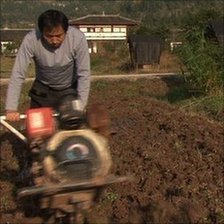Over the past year, I’ve been working with a Cook Islands NGO, Te Rito Enua, with funding from the Asian Development Bank, to develop a pilot project on participatory GIS as a tool to assist island communities to develop climate adaptation strategies. While there, Mona Matepi, president of TRE, called my attention to the problem of invasive vines on the island. Three species of woody vines* are colonizing the island forests, causing massive deforestation. They overtop and kill trees, replacing the forest with a solid jungle of vines. Since Rarotonga is dependent upon surface water for its entire supply, and since vines were killing the trees in its forested watershed, it seems like a non-trivial issue. Nobody knows how the vines will affect water supply. Will they reduce surface water supply through evapotranspiration? Will they hold the soils as well as the trees they are replacing? How will they respond to the more frequent cyclones and droughts that climate models predict? And, if they are a problem, how can they be controlled? Many questions to answer – our challenge right now is to find support for research into the issues and the options available. If no one does anything, there’s a chance, and its not a tiny one, that there could someday be a humanitarian crisis that would have severe implications for one of the dwindling number of robust Polynesian cultures remaining.
I asked University of Maryland doctoral candidate Benjamin White, a remote sensing specialist, for advice on how to illustrate the extent of the vine infestation. The island is rugged and steep, difficult to map on foot. But I was able to take some measurements using a handheld GPS unit. Ben offered to have a go at classifying the vines using my field observations as training data. Commercial remote sensing imagery provider GeoEye donated high-resolution (4m and 1m) satellite images. Ben developed a sophisticated neural net classifier, and processed the images as R/G/IR reflectance, reflectance-based NDVI, principal components, mean texture and a quick reflectance to “dense vegetation” classification. The final result was uploaded to Google Earth for visualization purposes; Google Earth data is not useful for this kind of application, but overlaying the classification results on a Google Earth image gives a context in terms of location and topography. Additional satellite imagery could provide complete ground coverage and (subject to availability) time series to measure change in land cover.
I’m hoping that the image will drive home how bad the problem is, and mobilize some support for Te Rito Enua and the Cook Islands government to get a handle on the vine problem.
Heartfelt thanks go to Ben White and the University of Maryland Geography Department, GeoEye, and the Asian Development Bank for support.
* the vines are Cardiospermum grandiflorum, Mikania micrantha, and Merremia peltata.
via GREEN HAND.















































